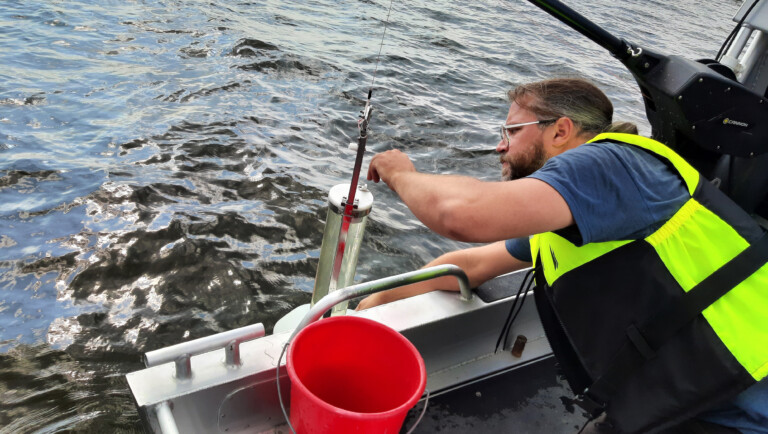Biodiversity
Can environmental factors explain the increase in MS?

Cases of multiple sclerosis are on the rise. In Sweden, approximately 1,000 people are diagnosed annually. Our genetic predispositions and other risk factors like lack of sunlight have not changed significantly, after all. So the question is, can other environmental factors be contributing to this negative trend?
Prenumerera på Extrakts nyhetsbrev!
Läs mer
Håll dig uppdaterad! Få kunskapen, idéerna och de nya lösningarna för ett hållbart samhälle.
Personal data is stored only for the mailing of Extrakt newsletters and information related to Extrakt’s operations. You can cancel the newsletter at any time, which means you will no longer receive any emails from us
Multiple sclerosis (MS) is a chronic neurological disorder affecting the brain and spinal cord. It is a so-called autoimmune disease in which the immune system attacks the body’s own tissues. Genetics can only explain between a quarter and a half of MS cases, far from all.
“We know, for instance, that smoking and certain viral infections early in life can increase the risk of developing MS. The further north on the planet you live, the greater the risk of developing MS, so it might also be connected to sunlight,” says Kim Kultima, associate professor at the Department of Medical Sciences at Uppsala University.
More women are affected
But these previously known risk factors cannot explain the increase in the disease currently noted in northern Europe and Sweden.

“We have among the highest number of diagnosed MS patients per inhabitant in Europe. We’re seeing an increasing trend where more women than men are being affected. Currently, two out of three MS patients are women.”
“Our genetic predispositions have not changed, so one possible explanation for this is the influence of external circumstances such as lifestyle factors and exposure to environmental toxins.”
Many of these environmental contaminants are persistent and accumulate in our bodies.
“In most cases, we don’t know in detail how we are affected. But what is known today is that many of these substances are endocrine disruptors that can affect our immune system and contribute to inflammatory processes. An increasing use of chemicals could be one of several other contributing factors to the increase in the prevalence of MS.”
The importance of external factors
In a new project, Kim Kultima intends to figure out the interaction between known risk factors and the impact of external environmental factors to gain a better understanding of why some individuals suffer from MS. He will have the help of extensive materials such as genetic information, evidence on known risk factors, lifestyle information, and blood from over three thousand MS patients.
“It’s a major national resource that has been built up for close to 15 years.”
It is an ambitious project. Besides the known environmental toxins, they are also looking at previously unidentified environmental toxins that may contribute to the emergence of MS.
“We’ll study the levels of the most well-known environmental toxins, but we’ll also determine whether other lesser-known substances could be linked to the early nerve inflammation that occurs in MS. Perhaps there’s something we’ve missed? It would be exciting if we were to find something completely new. There is a lot of information about the chemicals PFAS and PFOS – but there’s more out there.”
Multiple sclerosis
Multiple sclerosis, or MS, is a disease of the central nervous system that affects the brain and spinal cord. Although it is not possible to fully recover, medication can slow down the course of the disease and relieve the symptoms.
Different forms of MS
The course of the disease varies greatly depending on the individual. MS is usually divided into the following four different forms, or courses:
Relapsing-remitting MS
The vast majority of people who get the disease have relapse-remitting MS. This is when the disease comes in periods of flare-ups called relapses, which can last from a few days to months. Symptoms can return in whole or in part.
The frequency of relapses varies greatly from person to person. It can be several years for some people, while others have several relapses during the first year. For some, more than ten years can pass between relapses, but this is very unusual.
Secondary progressive MS
After about 10 to 15 years with the disease, the patient slowly deteriorates even between relapses. When this period begins, it is called secondary progressive MS.
Primary progressive MS
The form of MS known as primary progressive MS is a rarer form of the disease in which the patient has no relapses at all but slowly worsening symptoms from the beginning. Just under one in five people with MS have this form.
Benign MS
Approximately one in five people with the disease have benign MS. This includes those who, despite many years of illness, do not experience troubling symptoms.








